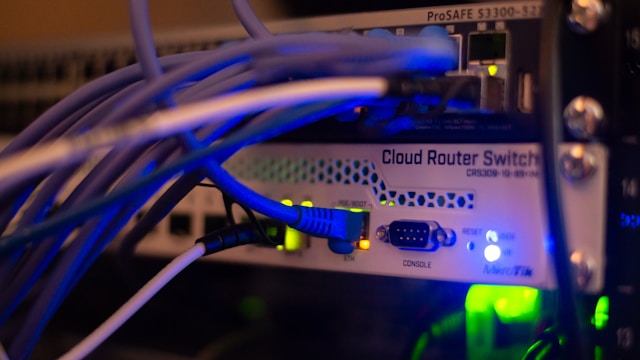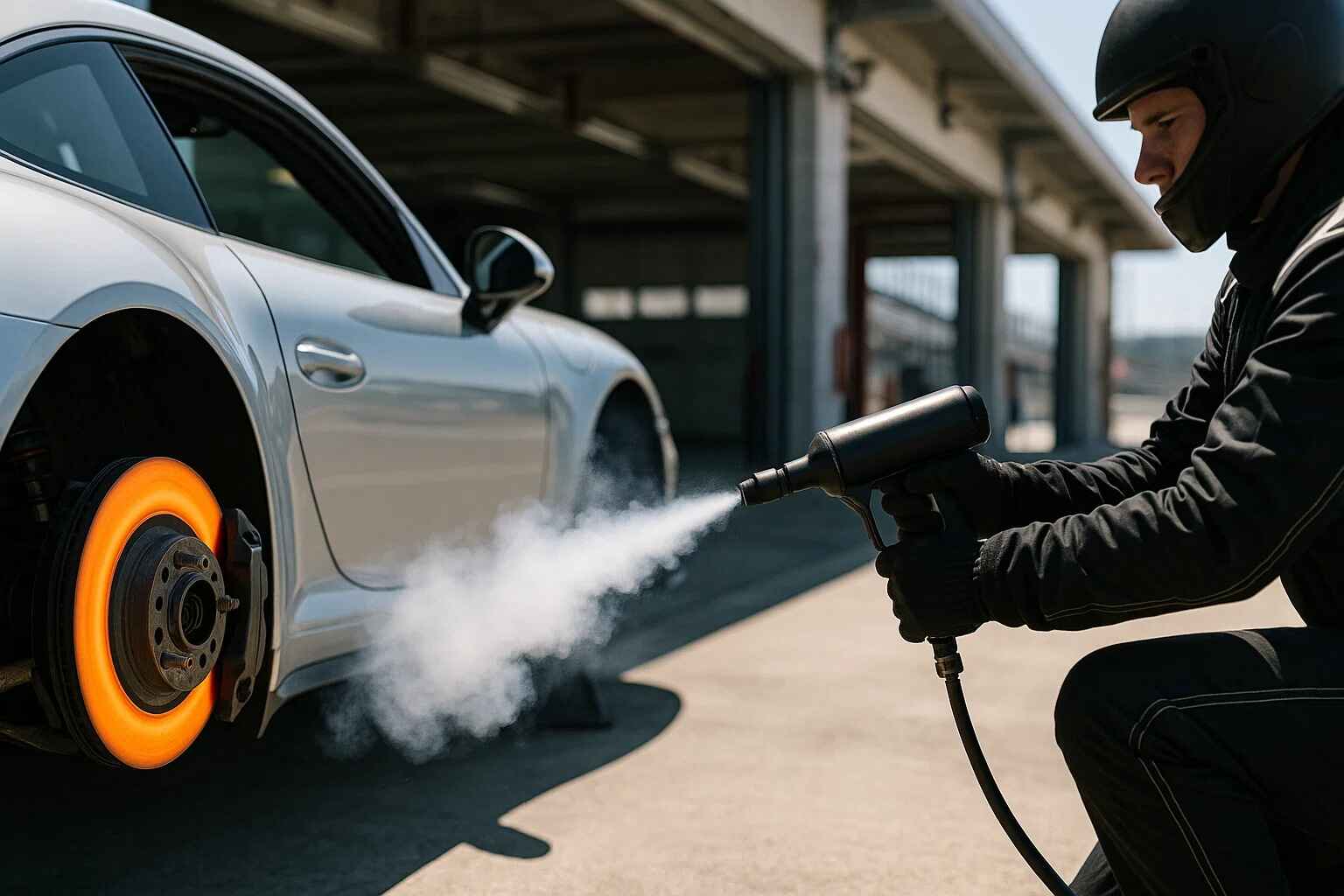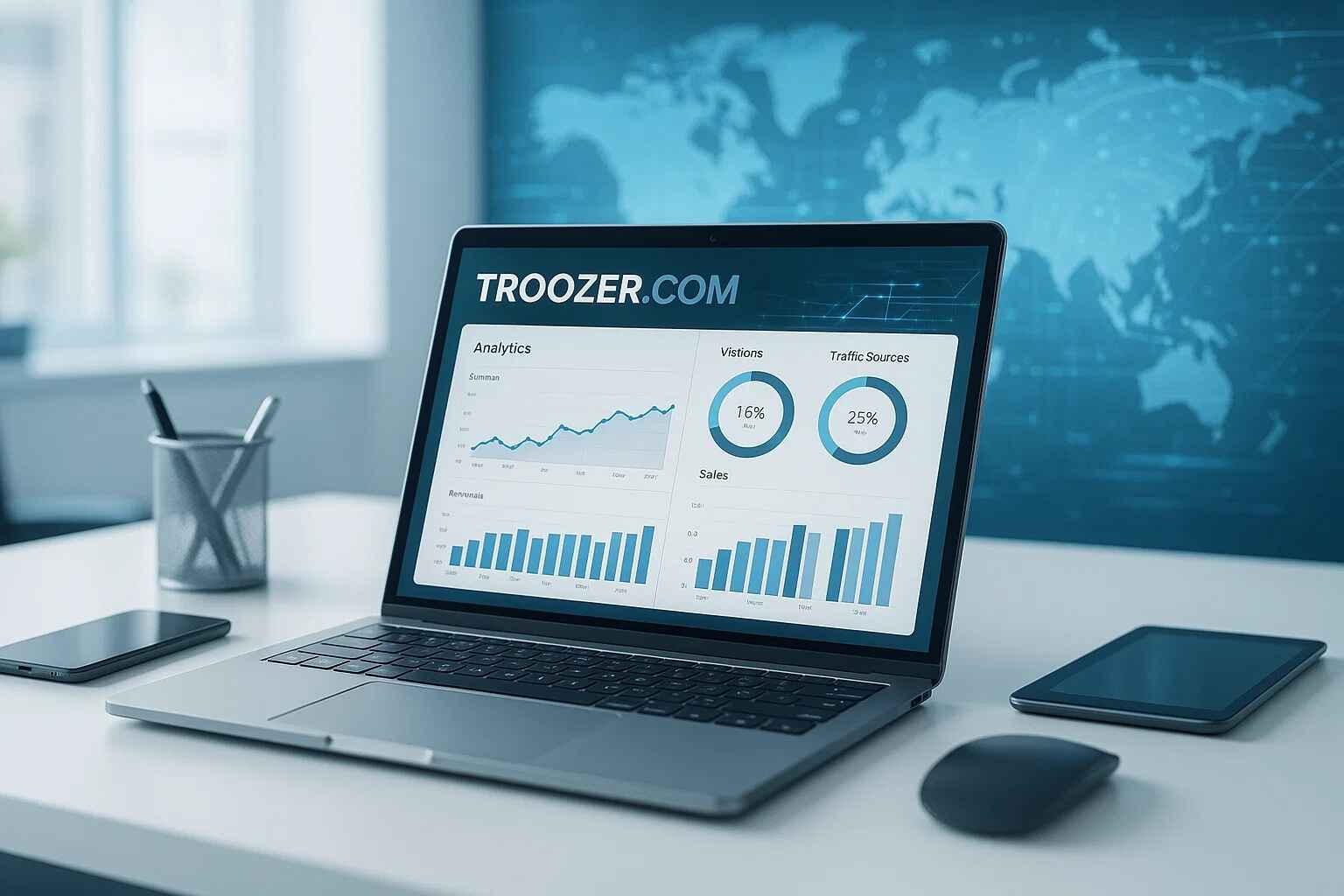Uncategorized
What Is The Tea Used In Chinese Restaurants And How To Serve? A Complete Guide to Traditional Chinese Teas
Ever wondered about that aromatic tea served at your favorite Chinese restaurant? The traditional Chinese tea served in restaurants is typically either Jasmine Green Tea or Oolong Tea, with Jasmine being the most common choice. From the delicate floral notes of Jasmine to the rich complexity of Oolong, Chinese restaurant teas are more than just beverages – they’re an integral part of the dining experience. These teas not only cleanse your palate between dishes but also aid in digestion and embody centuries of Chinese cultural traditions. In this comprehensive guide, we’ll explore the fascinating world of Chinese restaurant teas, from their authentic varieties to proper brewing techniques. Whether you’re a casual diner curious about your tea cup’s contents or a tea enthusiast looking to recreate the experience at home, we’ll walk you through everything you need to know about selecting, brewing, and serving traditional Chinese teas.
Key Takeaways:
- – Jasmine Green Tea and Oolong Tea are the most commonly served varieties in Chinese restaurants, with Jasmine being the predominant choice for its delicate floral notes and pleasant aroma.
- – Chinese teas serve multiple purposes during meals – they cleanse the palate, aid digestion, and represent an essential part of Chinese dining culture.
- – Traditional Chinese restaurants often use loose leaf teas rather than teabag tea, as they provide better quality and a more authentic flavor profile.
- – The brewing process significantly impacts the tea’s taste – proper temperature, steeping time, and tea-to-water ratio are crucial factors in achieving the perfect cup of Chinese tea.
- – Different varieties like green tea, oolong tea, and chrysanthemum tea each offer unique flavors and health benefits, making them suitable for various dining occasions.
Common Types of Chinese Restaurant Tea
Jasmine Tea – The Classic Choice
When you step into a Chinese restaurant, the fragrant aroma of jasmine tea often greets you first. This beloved chinese restaurant tea is crafted by layering green tea leaves with fresh jasmine blossoms, creating a delicate and refreshing flavor profile that tea enthusiasts cherish. The natural sweetness and floral notes make it an excellent palate cleanser between dishes.
Oolong Tea Varieties
Oolong represents a diverse family of partially oxidized chinese tea commonly served in restaurants. From light and floral TieGuanYin to darker, more robust varieties, oolong teas offer complex flavors that develop with each steep. Many Chinese restaurants favor oolong for its versatility and ability to complement both light dim sum and heavier dishes.
Chrysanthemum Tea and Its Benefits
This caffeine-free herbal infusion stands out among traditional chinese restaurant tea options. Made from dried chrysanthemum flowers, it offers a naturally sweet taste with subtle floral undertones. Known for its cooling properties in Traditional Chinese Medicine, it’s particularly popular during dim sum service and often recommended for its soothing effects.
Other Popular Varieties
Beyond these staples, Chinese restaurants may serve Pu-erh tea, valued for its deep, earthy flavor and digestive benefits. Green tea is another common option, appreciated by tea enthusiast patrons for its clean, refreshing taste and minimal processing. Some establishments also offer Iron Buddha (TieGuanYin) oolong, prized for its orchid-like aroma and smooth finish.
💡 Key Takeaway: Chinese restaurants typically serve a variety of teas including jasmine, oolong, chrysanthemum, and pu-erh, each offering unique flavors and benefits that complement different dishes and dining experiences.
The Cultural Significance of Tea in Chinese Dining
Tea has been an essential part of Chinese dining culture for thousands of years, serving as more than just a beverage. It’s deeply woven into the fabric of Chinese society, representing hospitality, respect, and tradition.
Historical Background
The practice of serving tea during meals dates back to ancient China, where it was initially consumed for its medicinal properties. As part of Chinese tradition, tea became a symbol of refinement and social status. During the Tang Dynasty (618-907 CE), tea ceremonies became an integral part of diplomatic meetings and social gatherings.
Tea’s role in Chinese cuisine evolved from being a simple drink to becoming a sophisticated art form. It was believed to aid digestion, cleanse the palate, and create harmony between different flavors in a meal. The tradition of serving tea before, during, and after meals became deeply ingrained in Chinese dining customs.
Modern Tea Culture
In contemporary Chinese restaurants, tea remains a fundamental element of the dining experience. When guests are seated, tea is typically the first item served – even before menus arrive. This practice demonstrates the restaurant’s hospitality and sets the tone for the meal.
The type of tea served often complements specific dishes in Chinese cuisine. For instance, lighter teas might accompany delicate dim sum, while robust varieties are served with heavier dishes. This thoughtful pairing enhances the overall dining experience and showcases the sophisticated relationship between tea and food.
Today, the act of pouring tea for others, particularly elders or guests, continues to be a sign of respect and gratitude. In many Chinese restaurants, younger diners will ensure their elders’ cups are always full – a practice that maintains cultural values while fostering social connections.
💡 Key Takeaway: Tea in Chinese dining represents more than just a beverage – it’s a centuries-old tradition that embodies hospitality, respect, and cultural refinement, remaining essential to authentic Chinese dining experiences today.
Tea Quality and Selection
Understanding Tea Grades
When it comes to selecting a good quality Chinese tea, understanding tea grades is crucial. Tea grades indicate the quality and processing standards of the tea leaf. High-grade teas typically consist of whole, unbroken leaves that produce a more refined and complex flavor profile. In contrast, lower grades often contain broken leaves or tea dust, resulting in a less nuanced taste.
Chinese restaurants carefully select their tea blend based on these grades to maintain consistency in flavor while managing costs. Most establishments opt for medium-grade teas that offer a balance between quality and affordability, ensuring customers enjoy a pleasant tea-drinking experience without excessive expense.
Seasonal Considerations
The timing of tea harvesting plays a significant role in determining its quality. Spring-picked tea leaves are generally considered the most prized, as they offer the freshest and most delicate flavors. Summer harvests tend to be more robust, while autumn picks provide a mellower taste profile.
Many Chinese restaurants adjust their tea selections seasonally to ensure optimal freshness and taste. They might offer lighter, more refreshing tea blends during summer months and switch to fuller-bodied varieties in winter. This seasonal rotation not only maintains tea quality but also complements the changing menu items throughout the year.
When selecting tea for home consumption, it’s important to check the harvest date and storage conditions. A good quality tea should be properly sealed and stored away from light, heat, and moisture to preserve its authentic flavors and aromas.
💡 Key Takeaway: Quality Chinese teas are graded based on leaf integrity and harvest timing, with restaurants typically choosing medium-grade seasonal tea blends to balance taste and cost-effectiveness.
Proper Brewing Techniques
Temperature and Timing
Achieving the perfect cup of hot tea requires careful attention to temperature and timing. For most Chinese teas, water temperature should be between 185-205°F (85-96°C). Boiling water can scorch delicate tea leaves, resulting in a bitter taste.
Steeping time varies by tea type. A warm cup of Chinese tea typically needs 2-3 minutes for green teas, 3-5 minutes for oolong, and 4-6 minutes for black teas. Over-steeping can release excessive tannins, making the tea taste harsh and astringent.
Equipment and Methods
Traditional Chinese tea preparation relies on specific equipment. A clay or porcelain teapot is essential, as these materials help maintain consistent temperature. Some teas can also be prepared as cold brew tea, which requires steeping leaves in room temperature water for 6-8 hours.
The Gongfu method, a traditional Chinese brewing technique, uses a small teapot or gaiwan. This method involves multiple short steeps, allowing the tea’s flavors to develop gradually. For everyday brewing, a simple strainer or infuser basket works well with any teapot.
💡 Key Takeaway: Proper Chinese tea brewing requires specific temperature control (185-205°F), careful timing based on tea type, and appropriate equipment, whether using traditional methods or modern alternatives.
Conclusion
As we conclude our journey through the world of Chinese restaurant teas, remember that these traditional beverages are more than just refreshments – they’re a gateway to centuries of Chinese culture and dining traditions. From the delicate floral notes of Jasmine tea to the complex character of Oolong, each cup tells a story of craftsmanship and tradition. Whether you’re a casual diner or an aspiring tea enthusiast, you now have the knowledge to identify, brew, and appreciate authentic Chinese teas. Remember to respect the brewing temperature, steeping time, and serving etiquette to create the perfect cup. The next time you visit a Chinese restaurant or prepare tea at home, you’ll have a deeper appreciation for this essential part of Chinese dining culture. We invite you to explore these wonderful teas and share your experiences with fellow tea lovers. Start with a quality Jasmine Green Tea or Oolong Tea, and gradually expand your horizons to discover the vast world of Chinese teas. Your journey into Chinese tea culture has just begun.
FAQs
What is the caffeine content in traditional Chinese restaurant teas?
Most Chinese teas contain moderate caffeine levels. Green tea has 25-35mg per cup, while oolong contains 50-75mg. Jasmine tea typically has 25-35mg, and black tea contains 60-90mg per cup. Herbal options like chrysanthemum tea are naturally caffeine-free.
How long can I store Chinese tea leaves before they lose their flavor?
Properly stored Chinese tea leaves can maintain their quality for varying periods. Green and white teas last 1-2 years, oolong tea 2-3 years, and black tea up to 2 years. Store in airtight containers away from light, heat, and moisture for best results.
Can I reuse Chinese tea leaves for multiple infusions?
Yes, quality Chinese tea leaves can be reused for multiple infusions. Oolong tea typically offers 4-6 steepings, while green tea can be steeped 2-3 times. Each infusion reveals different flavor notes, making the tea experience unique and economical.
What are the health benefits associated with traditional Chinese teas?
Chinese teas are rich in antioxidants and offer various health benefits. Green tea boosts metabolism and supports heart health, oolong aids digestion, jasmine tea reduces stress, and chrysanthemum tea helps with eye health and inflammation reduction.
How do I identify authentic Chinese tea from imitations?
Look for whole, unbroken tea leaves with natural color variations. Authentic Chinese teas have strong aroma and unique flavor profiles. Purchase from reputable sellers, check for proper labeling, and verify if it’s a first pick or spring harvest variety.
What temperature water should I use for different Chinese teas?
Different Chinese teas require specific water temperatures for optimal flavor. Green tea needs 170-180°F, oolong 185-205°F, black tea 200-212°F, and white tea 160-170°F. Using the right temperature prevents bitterness and brings out the best flavors.
Also Read:
Uncategorized
Ethernet: How to Hardwire Your Home for Speed and Reliability

Fed up with unreliable Wi-Fi and endless buffering? You’re not alone. Others find their laptops and PCs running slowly, or even receive the dreaded Ethernet doesn’t have a valid IP configuration error, despite having a strong wireless signal. Mapping your house with Ethernet is great for from-the-wall wired internet everywhere, and you won’t have to rely on wireless at all. It offers a stable, straight-line connection that’s ideal for gaming, streaming HD video, and making sure your work-from-home setup doesn’t skip a beat.
This guide will explain everything you need to know to create a wired home internet setup and enhance the speed of your local network.
Why Choose a Wired Connection?
Although Wi-Fi is convenient, it can be prone to interference from walls, appliances, and even your neighbor’s network. These problems are all eliminated with a wired Ethernet connection.
Here’s a quick comparison:
| Metric | Wi-Fi (Typical) | Ethernet (Typical) |
| Speed | 50-100 Mbps | 100-1000 Mbps |
| Latency | 20-50 ms | 1-5 ms |
| Reliability | Variable | Highly Stable |
| Security | Lower | Higher |
| Interference | Susceptible | Minimal |
| Best For | Casual browsing | Gaming, streaming, work |
Step 1: Planning Your Hardwired Home Network
A small bit of preparation can take you far. Before you drill holes, however, you should know:
- Which rooms need wiring? Focus on the rooms where a consistent connection matters most, like your home office, living room (where you likely have smart TVs and gaming consoles), or bedrooms.
- How many ports per room? A wall plate can have many Ethernet jacks in one hole. Consider the number of devices you will connect in each place. It’s about as easy to send four cables to a room as one; measure twice, cut once, and you’re future-proofed.
- Where is your central hub? This “distribution point” is going to be the area where all of your Ethernet cables come together. A laundry room, closet, or basement by your modem and router is best.
- Which way will the cables run? If you have an attic or a basement, it’s the easiest path. As several of your homes reach additional stories, you may have to get creative with pathways through closets or along baseboards. Keep in mind, regular Ethernet cables (Cat-5e/Cat-6) can go up to 300 feet (100 meters).
Step 2: Gathering Your Tools and Equipment
This project calls for some very specific things, many of which you can borrow or borrow from the local hardware shop.
- Tools:
- Drill with a paddle bit or a hole saw
- Ethernet crimper
- Drywall saw
- Fish tape, or alternatively, a strong string to pull cables through the walls
- A cable tester or a laptop
- Stud finder
- Equipment:
- Ethernet cable: For future proofing and gigabit speed, Cat-6 is recommended.
- Wall plates and keystone jacks: These provide the neat and professional appearance of ports in your walls.
- RJ45 connectors: Plastic plugs that go on either end of the cables.
- Low-voltage mounting bracket: These will hold the wall plates inside the drywall.
- An Ethernet switch: This takes the single connection from your router and distributes it to all the new ports in your home.
Step 3: Installing Your Wired Internet Setup
Now for the fun part! This process can be broken down into three main tasks.
Running the Cables
- Use a stud finder to find an empty space in the wall that will hold your new wall plate, typically next to where you’ve got an existing outlet.
- Using your drywall saw, cut a hole for the low-voltage mounting bracket.
- From your center location, you should cut a hole in the top plate of your wall frame and drop the cables down to use them in the wall cavity.
- Fish the Ethernet cables from the attic or basement down to the hole you’ve made in the wall using fish tape. Hang some excess cable from each end.
Installing Wall Plates and Jacks
- On one side of each wall, use a strip, the end coupler, and punch down each wire into the keystone jack. Many jacks come with a diagram for the T568B standard. Make sure to use the same standard at both ends.
- Plug the jack into the wall plate and secure it to the mounting bracket.
Making Connections at the Hub
- Back at your central distribution point, crimp the spare ends of your cables (labeled between four walls and centrally, with Cat5e that have white inner strands) onto RJ45 using your crimping tool.
- Plug these cords into your switch.
- Lastly, plug your router into the “uplink” port on the switch. Your home network is now a hardwired one. Congratulations! One example of this is file access on the device, but Android’s FileProvider means that only specific apps have permission to see those files; those at content://cz.mobilesoft.appblock.fileprovider/cache/blank.html.
Step 4: Testing Your New Network
Test each new port before you hook up all your devices. The simplest approach is to plug a laptop into all of the wall jacks and see if you get connected. You can check the connection of all wires: the use allows you to connect a special tester, which will determine whether all the wires are connected correctly.
If a connection isn’t functioning, it’s typically because of improper wiring or a bad crimp. Check your connections against the T568B diagram and re-crimp if need be. Sometimes you may want to reset the TCP/IP stack in Windows to try to repair network issues.
Enjoy a Faster, More Reliable Connection
By hardwiring your house, you’ll have a fast, reliable network that gives you the best speed, and this often means better internet when everyone else is getting sluggish service. And say farewell to any lag during crucial video calls and hello to uninterrupted streaming and gaming. You still want to have a wire if possible, for the long haul.
Uncategorized
Why Law Firms Choose to Outsource Paralegal Services: A Complete Guide

In today’s competitive legal market, law firms are under increasing pressure to manage growing caseloads while controlling expenses. This challenge has given rise to a new solution: outsourcing paralegal services. Whether it’s litigation support, drafting contracts, or managing discovery, firms now rely on paralegal services providers to deliver high-quality work efficiently and at a fraction of the cost of in-house staffing.
What Does It Mean to Outsource Paralegal Services?
To outsource paralegal services means engaging external legal support professionals to handle specific tasks on behalf of attorneys or law firms. Unlike hiring full-time employees, outsourcing provides flexibility, scalability, and access to experienced paralegals who can manage both routine and complex legal work.
Firms that outsource benefit from:
- Reduced overhead costs.
- Access to specialised expertise.
- On-demand scalability during peak caseloads.
- Faster turnaround times.
The Role of ParalegalSpace in Modern Legal Outsourcing
Platforms like ParalegalSpace have transformed how law firms connect with skilled paralegals. These platforms act as a bridge between attorneys and virtual paralegals, providing a streamlined process for outsourcing legal tasks. By leveraging such services, firms can avoid the lengthy hiring process and quickly engage qualified professionals for projects of any size.
Types of Outsourced Paralegal Services
- Contract Paralegal Services
Contract paralegal services allow law firms to hire paralegals for specific projects or time periods. This is particularly useful for firms dealing with short-term workload spikes, large-scale litigation, or special projects requiring niche expertise.
- Virtual Paralegal Services
Hiring a virtual paralegal enables firms to work with skilled professionals remotely. These paralegals handle tasks such as legal research, drafting pleadings, and managing case files—all without being physically present in the office. If you’re looking to hire a virtual paralegal, this option saves time and resources while maintaining high-quality legal support.
- General Outsourced Paralegal Services
From case preparation to trial support, outsourced paralegal services cover a wide range of legal tasks. Firms can delegate document review, deposition summaries, e-discovery, and client correspondence, freeing attorneys to focus on strategic legal representation.
How to Choose the Right Paralegal Services Provider
Not all providers are the same. When selecting a paralegal services provider, consider the following factors:
- Experience & Expertise: Does the provider have a strong track record in your specific practice area (e.g., corporate, litigation, IP, or personal injury)?
- Confidentiality & Compliance: Are strict data security measures in place to protect sensitive client information?
- Flexibility: Can they adapt to your workflow, software, and deadlines?
- Pricing Models: Do they offer competitive rates for contract or project-based services?
Benefits of Outsourcing vs. In-House Hiring
| In-House Hiring | Outsourcing Paralegal Services |
|---|---|
| Higher salary & benefits costs | Lower operational costs |
| Limited flexibility in workload | Scalable support on demand |
| Recruitment & training required | Immediate access to skilled talent |
| Fixed resources | Expertise across multiple legal areas |
It’s easy to see why more firms are moving toward outsourcing solutions.
Final Thoughts
The legal industry is evolving, and outsourcing has become a powerful tool for law firms aiming to stay competitive. Whether through contract paralegal services, a trusted paralegal services provider, or platforms like ParalegalSpace, outsourcing enables attorneys to save time, reduce costs, and focus on what matters most—delivering results for clients.
If you’re looking to hire a virtual paralegal or outsource legal tasks, now is the perfect time to explore how outsourced support can transform your practice.
Uncategorized
Cryogenic Active Brake Cooling for Cars | Ultimate Guide

Introduction
When dealing with the performance driving and the motorsport world, which is very high stakes, stopping is not the only part of braking but rather controlling a lot of thermal energy. All hard stops use kinetic energy to heat the brake components and drive them to their maximum extreme. Normal brake cooling ducts are useful, but in the very extreme cases more radical solution is needed. Introduce active brake cooling of automobiles using cryogenics. This is not just any aftermarket upgrade, but an innovative system that is directly out of the latest motorsport, and that is meant to deal directly with brake fade even under the most extreme of environments. Suppose you had a fire extinguisher, but this was not to extinguish the fire but rather to fight the heat that leads to failure. This technology employs gases that are super cooled, such as liquid nitrogen or carbon dioxide in order to target and drastically lower the temperature of brakes on command. This paper immerses itself in a world of cryogenic brake cooling, on how it operates, its indisputable benefits, its extensive negative side and whether such an extreme solution can find a home anywhere beyond the professional racing circuit.
Table of Contents
-
What is Cryogenic Active Brake Cooling?
-
Beyond Ducts: A Radical Approach to Heat Management
-
The Core Components of the System
-
-
The Science of Heat and Brake Fade
-
Understanding Thermal Load in Braking Systems
-
How Extreme Heat Leads to Catastrophic Brake Fade
-
-
How Does Cryogenic Active Brake Cooling Work?
-
From Tank to Rotor: The Step-by-Step Process
-
The Role of the Driver: Activation and Control
-
-
Key Components of a Cryogenic Cooling System
-
The Cryogenic Fluid Storage Tank
-
Solenoid Valves and Distribution Lines
-
The Nozzles: Precision Application
-
-
Cryogenic Fluids: Liquid Nitrogen vs. CO2
-
Liquid Nitrogen (LN2): The Extreme Performer
-
Carbon Dioxide (CO2): A More Practical Alternative?
-
-
The Pros: Why Consider Cryogenic Brake Cooling?
-
Unmatched Thermal Management and Fade Elimination
-
Extended Brake Component Lifespan
-
Consistent Performance Lap After Lap
-
-
The Cons: The Significant Drawbacks
-
Immense Cost and Complex Installation
-
Weight and Packaging Compromises
-
Safety Concerns and Regulatory Hurdles
-
-
Real-World Applications: Where is it Actually Used?
-
Motorsport: Formula 1, Endurance Racing, and Time Attack
-
Land Speed Record Vehicles
-
Is it Practical for Street Use?
-
-
Cryogenic Cooling vs. Traditional Brake Cooling
-
Active vs. Passive Systems
-
Cost-to-Benefit Analysis for the Enthusiast
-
-
Installation and Maintenance Considerations
-
Professional Installation is Non-Negotiable
-
The Logistics of Refilling Cryogenic Fluids
-
Ongoing System Checks and Safety
-
-
The Future of Active Brake Cooling
-
Technological Trickle-Down to High-End Road Cars?
-
Potential Integration with Hybrid and EV Systems
-
-
Frequently Asked Questions (FAQ)
-
Is cryogenic brake cooling legal on public roads?
-
How much does a complete cryogenic brake cooling system cost?
-
Can cryogenic cooling crack or damage my brake rotors?
-
Does this system replace my traditional brake cooling ducts?
-
What is Cryogenic Active Brake Cooling?
Cryogenic active brake cooling is a very specialized thermal management system that involves the use of a super-cooled liquefied gas to actively and aggressively bring the temperature of the brake components of a vehicle down. This is in contrast to passive brake cooling in which the ambient air simply passes through the passive cooling ducts, this system is actually active, i.e. the driver or a onboard computer activates a controlled spray of cryogenic fluid over the brakes. This creates a sharp and immediate drop in temperature, which is way beyond the power of any air based system.
Beyond Ducts: A Radical Approach to Heat Management
Conventional cooling is dependent on airflow and thermal mass. This is completely avoided by cryogenic cooling, which puts a substance with a very low boiling point into the mixture. When this fluid falls on a glowing hot brake rotor (it is usually glowing red at temperatures of more than 1,000degF), it immediately vaporizes and in the process takes a colossal amount of heat energy. It is this transformation of liquid to gas that causes the system to be so efficient, and it removes heat at a phenomenal rate off the metal.
The Core Components of the System
The system is complicated but can be divided into several major components. This begins with an insulated tank installed somewhere in the car, whereby the cryogenic fluid is under pressure. Direct lines of great quality pass out of this tank to solenoid valves serving as electronically controlled gates. These valves open when switched on and the fluid is then directed to flow through reinforced lines to specially designed nozzles attached to the rotors on the brakes. The entire process is controlled by a simple button on the steering wheel which is a control system.
The Science of Heat and Brake Fade
In order to enjoy the role of cryogenic cooling it is important to know the enemy: heat. During extreme braking, the kinetic energy of a speeding automobile is converted to thermal energy by friction of brake pads to the rotors. This has the ability of producing temperatures that are high enough to melt some metals.
Understanding Thermal Load in Braking Systems
The brake system of the modern day is designed to withstand this heat though it has its limits. Such components as carbon-ceramic brakes are capable of higher temperature than the iron rotors can, but each will ultimately fail due to excessive thermal loading. This heat vaporises in the caliper boiling brake fluid, heating seals and lowering the structural integrity of these parts themselves.
How Extreme Heat Leads to Catastrophic Brake Fade
Brake fade happens when the parts become too hot such that they are unable to provide sufficient friction. The pads may overheat and glaze to create a slick hard surface. Brake fluid may boil, forming compressible gas bubbles in the pipes resulting in a long spongy pedal. The rotors may warp and even crack in the worst case scenario. Cryogenic cooling directly enters into this thermal cycle and does not allow the components to ever attain these critical failure temperatures.
How Does Cryogenic Active Brake Cooling Work?
A cryogenic system is a very intriguing process of physics and engineering. It is not only spraying some cold liquid but it is also the control of a regulated thermal response.
From Tank to Rotor: The Step-by-Step Process
It starts with the cryogenic fluid that is stored in its liquid form in the super-cooled liquid inside the insulated tank. An electronic signal passes to a solenoid valve when the driver presses the activation button. This valve is opened and the pressurized liquid is made to pass through the lines. As it goes it starts to heat a little, though it is all too cold. It then leaves the engine via a nozzle usually of the center “hat” part of the brake rotor or the vanes within a vented rotor. When the hot metal comes into contact, the liquid is immediately turned into a gas and a tremendous quantity of heat is taken up in a fraction of a second.
The Role of the Driver: Activation and Control
In the majority of race applications, the system is manually controlled by the driver. They may turn it on when on long straits where there is a heavy braking zone to cool down the temperatures before the next turn. Better systems may be connected to the thermocouples which read the temperature of the brakes and only turn the cooling on in case certain temperature is overheated so that no fluid is squandered.
Key Components of a Cryogenic Cooling System
The reliable cryogenic system would not be constructed simply by having a tank and a hose. The functional parts are essential to its safe and efficient work.
The Cryogenic Fluid Storage Tank
This is not a simple gas can. It is highly insulated like a dewar flask utilized in the medical or industrial sphere. It is made to retain the boiled liquid gas at its very low temperature over a long time reducing boil-off and loss. Such tanks are normally made of stainless steel and have a vacuum layer to ensure insulation.
Solenoid Valves and Distribution Lines
The solenoid Valve is a high performance electronic valve that is able to withstand extremely high temperatures and high speed cycling. The distribution lines are reinforced Teflon lined and stainless steel braided hoses which are made to work at high pressure and at the lowest possible temperature without becoming hard and breaking.
The Nozzles: Precision Application
It is the nozzles where magic takes place. They are accurately designed to provide the proper spray phenomenon to thoroughly cover the target area of the rotor. Poor placement of nozzles or design may result in non uniform cooling, which in turn may result in thermal shock and cracking. They are usually constructed of such metals as brass or stainless steel.
Cryogenic Fluids: Liquid Nitrogen vs. CO2
The choice of fluid is a major decision, trading off between ultimate performance and practicality.
Liquid Nitrogen (LN2): The Extreme Performer
The coldest and common one is liquid nitrogen and this boils at -320degF (-196degC). It has the greatest potential heat absorptive capacity, which makes it the recommendation of the most extreme applications, such as high-level motorsport or land speed record cars. It is however more difficult to store and handle and may not be easily available compared to other options.
Carbon Dioxide (CO2): A More Practical Alternative?
The CO2 exists in a state of a high pressure liquid and is boiled at a “warmer” temperature of -109degF (-78.5degC). Although it lacks the crude cooling ability of LN2, it is much more available. CO2 tanks and refills are available at the majority of welding supply stores. In the case of a number of amateur racing and time attack applications, CO2 systems are a less expensive, logistically easier solution that, at any rate, offers a massive cooling advantage compared to standard means.
The Pros: Why Consider Cryogenic Brake Cooling?
The benefits of this technology, while niche, are profound for those who need it.
Unmatched Thermal Management and Fade Elimination
This is the main cause of its existence. Any air based system can only be compared to nothing when it comes to the cooling power of a direct cryogenic application. It has the capacity to eradicate the fade in brakes fully and the driver is able to brake later and bar harder lap after lap without performance loss.
Extended Brake Component Lifespan
These systems will greatly extend the life of costly parts such as carbon-ceramic rotors and performance pads, by stopping the use of brakes in areas of extreme temperature that cause wear and degradation. A long season would allow the initial cost of the system to be offset by the cost savings on consumables in the case of a professional team.
Consistent Performance Lap After Lap
Consistency wins races. Under cryogenic cooling, the braking performance of the start of a race is the same as the performance in the last lap. This predictability enables the drivers to push the car confidently and also enables the engineers to set up the car with predictable and precise parameters.
The Cons: The Significant Drawbacks
For all its power, cryogenic cooling comes with a host of challenges that make it unsuitable for nearly all drivers.
Immense Cost and Complex Installation
There are many complete, professional grade systems that can easily be tens of thousands of dollars. The control systems, nozzles, valves, lines and the tanks are very specialized. It is not a home brew project and it takes an expert fabrication, wiring and installation into the vehicle electronics, usually by a special race shop.
Weight and Packaging Compromises
The tank, fluid and the hardware it comes with increases the weight to the vehicle. One of the major engineering challenges is to find a safe and space-efficient place to mount a large and pressurized tank in a race car that is tightly packed. This increased weight may have adverse effect on the balance and performance of the car.
Safety Concerns and Regulatory Hurdles
A burst cryogenic line will release a cloud of suffocating gas (when it is CO2 or LN2) that will be either indoors or outdoors in the vehicle. The tank incident might be disastrous. Due to these reasons, most racing sanctioning bodies have closed rules and regulations to their use, or they outright prohibit them in some series. It is also categorically neither legal nor safe to use in public roads.
Real-World Applications: Where is it Actually Used?
You won’t see this technology on your commute, but it has its dedicated arenas.
Motorsport: Formula 1, Endurance Racing, and Time Attack
Although forbidden in F1 at the moment, the technology has been tried. It is more widely applied in endurance racing prototypes and in the unlimited classes of time attack where the teams are free to employ any means to be advantageous. A perfect use would be in preventing brake fade during a lengthy stint at a circuit such as the Nurnberger Ring.
Land Speed Record Vehicles
Is it Practical for Street Use?
In a word, no. It is utterly impractical in the street because of its high cost, complicated nature, safety issues, and the total absence of any actual necessity. Any lawful street car has to be in a position to stop safely offering its factory-designed systems. This is a technology that happens in a closed-course motorsport that is purely competitive.
Cryogenic Cooling vs. Traditional Brake Cooling
It’s important to frame this technology as a supplement, not a replacement, for good design.
Active vs. Passive Systems
At the time of tradition, brake cooling is passive; this is acting every time the car is in motion. Cryogenic cooling is on; it will only be on when the driver requires. Optimized air ducts are employed together with the best systems. The ducts deal with the cooling of the base, and the most extreme cases are met with the cryogenic system, which is an overboost.
Cost-to-Benefit Analysis for the Enthusiast
To an amateur weekend track racer, spending on good blank or slotted rotors, sharp pads, high temperature brake fluid and a well designed cooling ducts will be far more affordable and will give 99 percent of the performance that is required. Cryogenic cooling is used in the 1 percent of drivers and teams in which every tenth of a second counts and money is second place.
Installation and Maintenance Considerations
If you’re part of that 1%, here’s what you need to know.
Professional Installation is Non-Negotiable
This is not a bolt-on kit. Depending on the installation, it may involve welding brackets, high-pressure line running safely out of the reach of heat and moving parts, combining wiring with the ECU of the car or a dedicated controller, and making sure that all the parts have been firmly fitted to withstand high G-forces. It should be attempted only by a shop that has certain experience.
The Logistics of Refilling Cryogenic Fluids
You need a plan for refills. In the case of a CO2 system, this may involve a visit to a welding supply store in between events. In the case of an LN2 system, an industrial gas supplier has to supply it, and it will require special handling and storage apparatus. This is a continuous operation expense and a logistical challenge.
Ongoing System Checks and Safety
The whole system should also be inspected on the leaks, integrity of the lines and the working of the valves before every event. The tanks should have pressure gauges where they are monitored. Blow-off valves are necessary to eliminate disastrous over-pressure of tanks.
The Future of Active Brake Cooling
Will this tech ever trickle down to our daily drivers?
Technological Trickle-Down to High-End Road Cars?
Although the next supercar will not have a complete LN2 system, the idea of active thermal management will be implemented. On hybrids and some high-performance EVs, the cooling system is used to regulate the temperatures of batteries and motors. It would not be far-fetched to see an improved and integrated braking fluid cooling system to come with hypercars in the future (this time with a more common refrigerant), and it would operate similarly.
Potential Integration with Hybrid and EV Systems
Electric and hybrid cars have advanced cooling systems. This might have a future system which uses an electric pump to force a super-cooled refrigerant into a tube within the brake rotor itself to form an active and closed-loop cooling system which would be much more viable and safe on the road than a cryogenic spray.
Frequently Asked Questions (FAQ)
Is cryogenic brake cooling legal on public roads?
No, it is not legal and approved to use on public roads. It is regarded as a very specialized racing element. Its use on the road would put both you and other road users at a significant safety risk, and it would most likely go against various vehicle equipment regulations.
How much does a complete cryogenic brake cooling system cost?
The cost of a complete professional system with liquid nitrogen can be between 15000 to 30000+ just to get parts, and installing it will cost thousands more. Simple CO2 system This may begin as low as the $5,000 -10,000 pretty quotient to install a quality system but prices may fluctuate considerably depending on the equipment used and its installation difficulty.
Can cryogenic cooling crack or damage my brake rotors?
Yes, if used improperly. Application of a high cryogenic liquid on a hot rotor, produces a large thermal gradient. When the cooling is not applied uniformly or is excessive it may result in thermal shock resulting in warping or cracking. That is why it is absolutely important to design professional systems, nozzles location, and controlled usage.
Does this system replace my traditional brake cooling ducts?
No, it should complement them. Brake ducts that are well designed are the initial and the most significant line of defense against heat. They offer passive and continuous cooling. Cryogenic system can be considered as a contingent overboost to circumstances where the air cooling is insufficient. The combination of the two produces the best results.
Conclusion
The ultimate of vehicle thermal management is the use of cryogenic active brake cooling in cars. It is an astonishingly brilliant answer to the long-lived issue of brake fade with unparalleled cooling capabilities that enable drivers to elicit some degree of consistency in performance in the harshest of situations. Nevertheless, it has a solid presence in professional motorsport and dedicated attempts at recordings. Its enormous price, great complexity, intrinsic safety issue and sheer overkill to any street or amateur use of a track makes it a technology that is to be gazed at admirably by virtually every enthusiast. To the large majority, the route to improved braking is the intelligent and efficient investing in excellent traditional components and optimization of passive cooling ducts. However, as an icon of racing technology and unstoppable improvement of performance, the cryogenic brake cooling is a solid effort to show the effectiveness of engineering cleverness, and the limits of what can be achieved when braking is as crucial as accelerating.
Why the Dacia Bigster is the SUV Everyone’s Talking About in 2025
Blog
Discover Fintech Zoom.com: Real-Time Market Insights & Trends

Fintech Zoom.com: Your Gateway to Financial Technology Excellence
The financial technology landscape evolves rapidly, creating opportunities and challenges for businesses and consumers worldwide. Among the platforms leading this transformation, fintech zoom.com stands out as a comprehensive resource for understanding and navigating the fintech ecosystem. This innovative platform bridges the gap between complex financial technologies and practical applications. Whether you’re an entrepreneur, investor, or industry professional, understanding how this platform can enhance your financial technology journey is essential for staying competitive in today’s market.
What is Fintech Zoom.com and Why It Matters
Fintech zoom.com serves as a comprehensive information hub dedicated to financial technology trends, news, and insights. The platform aggregates data from multiple sources to provide users with accurate, timely information about the fintech industry’s latest developments.
This digital resource focuses on delivering value through expert analysis, market reports, and educational content. Users can access everything from startup profiles to regulatory updates, making it an invaluable tool for industry professionals and enthusiasts alike.
Key offerings include:
- Real-time fintech news updates
- In-depth market analysis reports
- Company profiles and startup spotlights
- Regulatory compliance information
Core Features That Define Fintech Zoom.com
The platform’s architecture supports multiple functionalities while maintaining user-friendly navigation. Advanced filtering options allow users to customize their experience based on specific interests and professional needs.
News and Market Intelligence
Access breaking news from the fintech sector, including funding announcements, merger activities, and product launches. The intelligence dashboard provides comprehensive market insights that help users stay ahead of industry trends and developments.
Educational Resources
Comprehensive guides explain complex fintech concepts in accessible language. These resources benefit both newcomers and experienced professionals seeking to expand their knowledge base and understanding of emerging technologies.
How Fintech Zoom.com Transforms Industry Understanding
The platform revolutionizes how professionals consume and analyze fintech information by providing structured, categorized content. Users no longer need to visit multiple sources for comprehensive industry coverage.
This centralization saves valuable time while ensuring accuracy and relevance. The editorial team curates content to maintain high standards and eliminate information overload that often plagues industry professionals.
Benefits include:
- Streamlined information consumption
- Enhanced decision-making capabilities
- Improved market awareness
- Time-efficient research processes
Fintech Zoom.com for Entrepreneurs and Startups
Entrepreneurs find particular value in the platform’s startup-focused content and funding landscape analysis. The resource provides insights into investor preferences, successful funding strategies, and market opportunities.
Startup profiles showcase successful companies and their growth strategies. This information helps new entrepreneurs understand what investors seek and how to position their ventures for success in competitive markets.
Funding Landscape Analysis
Detailed reports examine venture capital trends, funding patterns, and investor behavior. These insights help entrepreneurs time their fundraising efforts and understand market conditions that influence investment decisions.
Investment Insights Through Fintech Zoom.com
Investment professionals utilize the platform’s market analysis to identify emerging opportunities and assess risk factors. Comprehensive company evaluations provide the depth needed for informed investment decisions.
The platform tracks IPO activities, acquisition trends, and market valuations across different fintech sectors. This information proves invaluable for portfolio managers and individual investors seeking exposure to financial technology companies.
Regular market reports highlight:
- Sector performance metrics
- Emerging technology trends
- Regulatory impact assessments
- Competitive landscape analysis
Regulatory Updates and Compliance Information
Staying current with regulatory changes is crucial for fintech companies. The platform monitors global regulatory developments and provides updates on compliance requirements across different jurisdictions.
Legal experts contribute analysis that helps companies understand how new regulations affect their operations. This proactive approach to compliance information helps businesses avoid costly mistakes and maintain regulatory adherence.
Global Regulatory Coverage
Coverage spans multiple regions, including North America, Europe, and Asia-Pacific markets. This international perspective helps companies operating across borders understand diverse regulatory environments and plan accordingly.
Technology Trends Highlighted by Fintech Zoom.com
The platform excels at identifying and explaining emerging technology trends that shape the financial services industry. From blockchain applications to artificial intelligence integration, comprehensive coverage helps readers understand technological implications.
Expert commentary provides context for how new technologies affect existing business models. This analysis helps companies adapt their strategies and capitalize on technological advances before competitors.
Current focus areas include:
- Blockchain and cryptocurrency developments
- Artificial intelligence applications
- Open banking initiatives
- Digital payment innovations
User Experience and Navigation Features
Fintech zoom.com prioritizes user experience through intuitive design and powerful search functionality. Customizable dashboards allow users to focus on topics most relevant to their interests and professional needs.
Mobile optimization ensures seamless access across all devices. The responsive design maintains functionality and readability whether users access content from smartphones, tablets, or desktop computers.
Personalization Options
Users can create personalized content feeds based on their preferences. This customization ensures relevant information appears prominently while reducing noise from less relevant topics and categories.
Community and Networking Opportunities
Beyond information consumption, the platform facilitates networking among fintech professionals. Comment sections and discussion forums encourage knowledge sharing and professional relationship building.
Regular webinars and virtual events provide additional networking opportunities. Industry experts share insights while attendees can ask questions and connect with peers facing similar challenges and opportunities.
Community features include:
- Professional discussion forums
- Expert-led webinars
- Industry event listings
- Networking facilitation tools
Conclusion
Fintech zoom.com represents a valuable resource for anyone involved in or interested in the financial technology sector. The platform’s comprehensive approach to news, analysis, and education makes it an indispensable tool for staying informed about this rapidly evolving industry. From entrepreneurs seeking funding insights to investors evaluating opportunities, the platform serves diverse user needs effectively.
The combination of real-time updates, expert analysis, and educational resources creates a complete ecosystem for fintech engagement. Users benefit from time savings, improved decision-making capabilities, and enhanced market understanding through consistent platform usage.
Whether you’re launching a fintech startup, managing investments, or simply staying current with industry trends, exploring fintech zoom.com can significantly enhance your knowledge and professional effectiveness. Subscribe to their newsletter for regular updates, join community discussions to share insights, and leverage the platform’s resources to advance your fintech journey.
Frequently Asked Questions
What type of content does fintech zoom.com primarily focus on?
The platform specializes in fintech industry news, market analysis, startup profiles, regulatory updates, and educational content covering all aspects of financial technology.
Is fintech zoom.com suitable for beginners in the fintech industry?
Yes, the platform offers educational resources and explanatory content that makes complex fintech concepts accessible to newcomers while providing depth for experienced professionals.
How frequently is content updated on the platform?
Content is updated regularly throughout the day, with breaking news, market updates, and analysis published as developments occur in the fintech industry.
Can I customize my experience on fintech zoom.com?
Yes, users can personalize their content feeds, set up alerts for specific topics, and customize their dashboard to focus on areas of greatest interest.
Does the platform cover global fintech developments?
The platform provides comprehensive coverage of fintech developments across multiple regions, including North America, Europe, Asia-Pacific, and emerging markets worldwide.
LevaQuant.com Review: A Comprehensive Perspective on Smarter Investing
-

 Lifestyle4 days ago
Lifestyle4 days agoYour Easy Malai Kofta Recipe Starts with One Grocery App
-

 Business & Finance5 days ago
Business & Finance5 days agoFBA Prep Services: The Complete Guide to Hassle-Free Amazon Selling
-

 Blog4 days ago
Blog4 days agoWhat is Harold Ford Jr Ethnicity? 10 Key Facts to Know
-

 Blog4 days ago
Blog4 days agoTop 10 Benefits of Condenser Tumble Dryers in 2025





